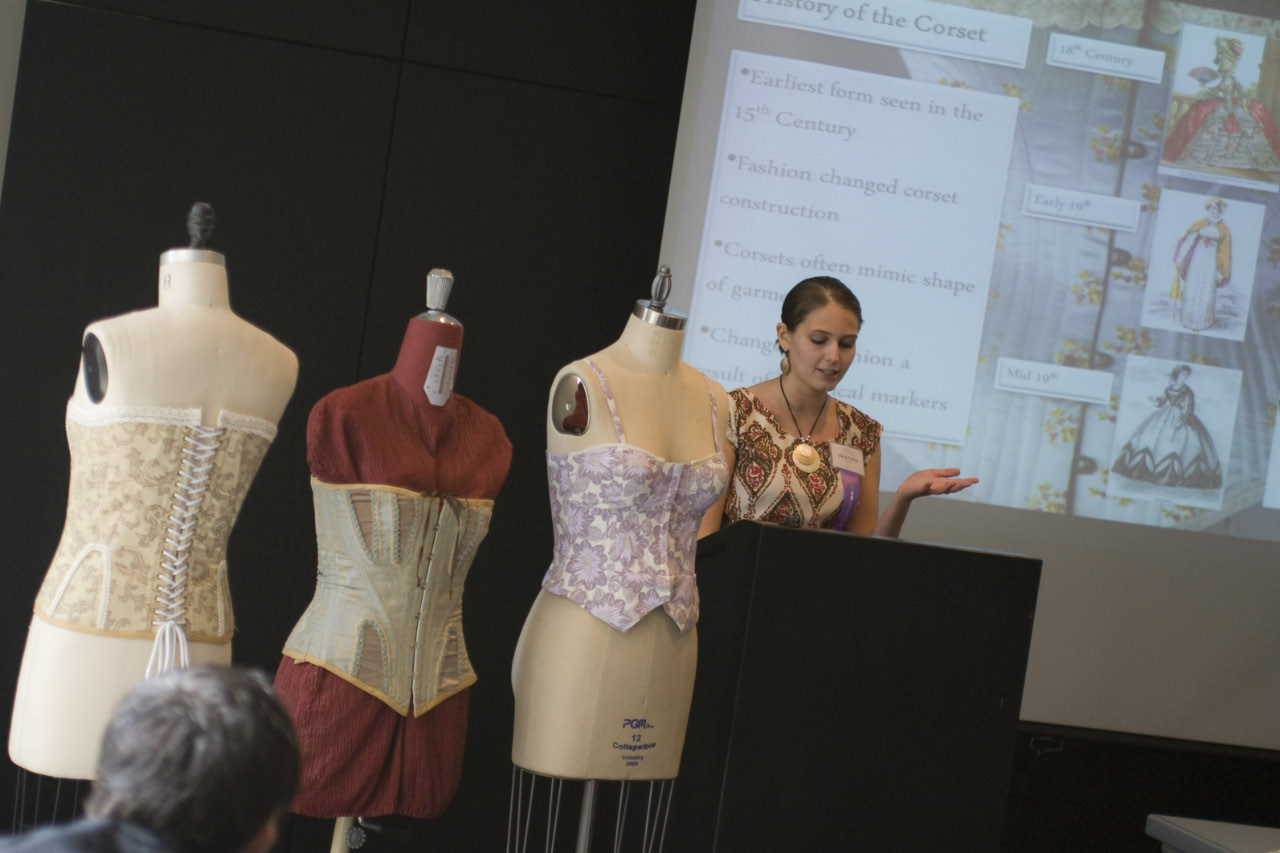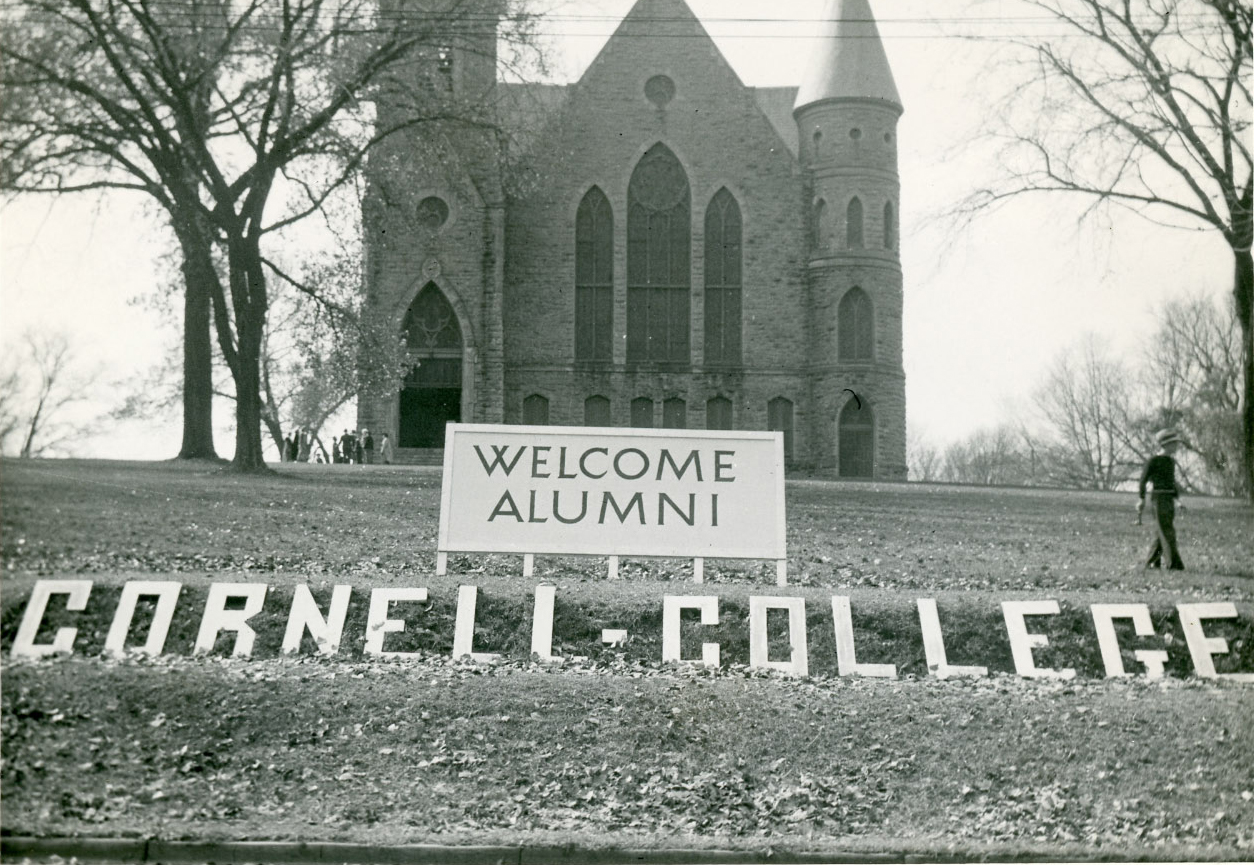
Cornellians come home for a century
Nov. 7, 1925: There’s a parade in Mount Vernon, but there’s also snow. Anyone who’s lived in Iowa knows that snow can come any time after Oct. 1, give or take, but this is a blizzard. It doesn’t stop Cornellians from parading through town, though, because it is Homecoming.
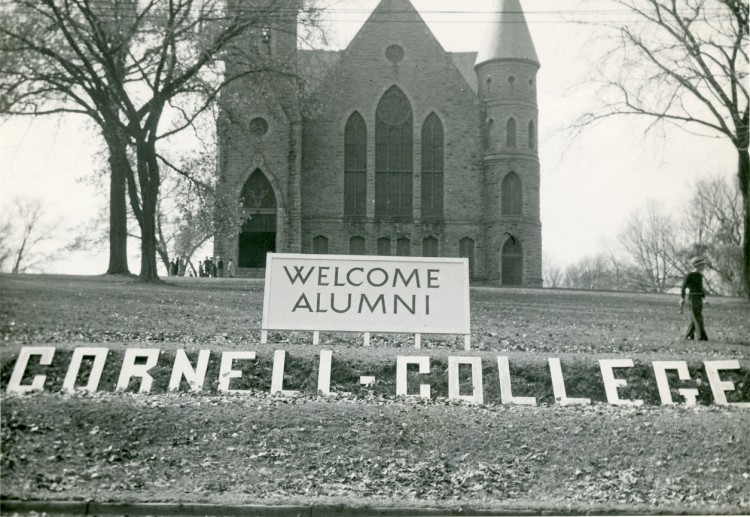
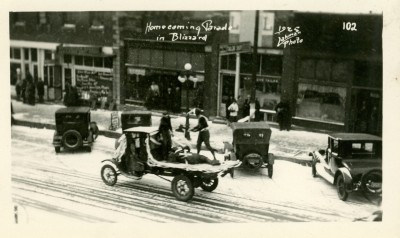
Photos of the parade show Model T Fords decked out in livery supporting various literary societies, a marching band walking up First Street into Uptown Mount Vernon, and a sparse crowd of onlookers, all covered in a layer of snow. Another photo, of the Home-
coming football game, shows a cold crowd of Cornellians, dressed in winter coats and hats, cheering on the team.
The weather had a major effect on the game. The Cornell College Alumnus reported: “Cornell gridders, battling more opposition in the elements than of the Monmouth college squad, played throughout a blizzard to a scoreless tie, the Cornellians threatening to cross the goal several times but being prevented by a slippery ball and a drifted gridiron.”

Homecoming was only 12 years old, but it was already such an important part of the life of the college that even an early snowfall and freezing temperatures couldn’t keep alumni away.
And so it is in 2013, the 100th anniversary of Homecoming at Cornell. At a college the size of Cornell, alumni make deep, lasting friendships, and are connected not just to a few people, but to the members of their graduating class, dorm mates, roommates, Greek organization, fellow majors, other athletes, and more. There are cross-generational relationships, too, with members of the same Greek group, co-curricular activity, or sport. And that’s not to mention the relationships formed over four years with faculty and staff.


Lisa White, the college’s director of alumni engagement, said all of those relationships keep people connected to Cornell and keep them coming back for events like Homecoming.
“The relationships at Cornell are unique, and they aren’t just with peers,” she said. “People come back to reconnect with classmates, faculty, and staff, as well as to connect with current students.”
Part of White’s job is to facilitate those connections, and to know when to let people connect on their own. To that end, Homecoming changed in 2012 with an all new format. The all-alumni dinner was moved back to campus, and more events were held in and around Mount Vernon. Events like Coffee with a Prof were introduced to get alumni and faculty together. But people also have free time throughout the weekend so that they can find one another on their own and reconnect in their own way.
That’s something the office of Alumni Engagement encourages, White said, and when planning Homecoming, the staff makes sure there’s a good mix of activities and unstructured time, along with the big draws like the Homecoming Convocation and (of course) the football game.
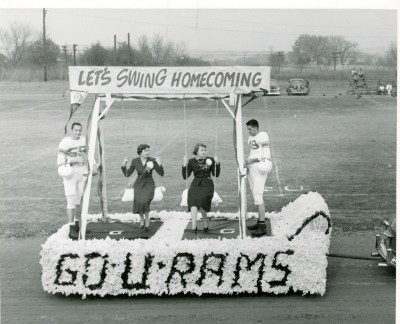
One of the reasons that so many events moved last year was because the alumni want to be back on campus and in Mount Vernon, White said. Being at Cornell is the most important part of the weekend for many of them.
The dynamics of keeping in touch are changing. With the advent of social networking sites like Facebook, people are able to keep up with each other throughout the year, not just one time at Homecoming. But Homecoming offers them the chance to be on campus, physically present, together. That sense of place evokes nostalgia, yes, but it’s also something that alumni can only get at Homecoming, which is one of the reasons it’s so central to the life of the college.
The weekend’s events will continue to evolve as each generation of alumni will want something different. “We just need to keep listening,” White said.
People’s perception of Homecoming changes through time, but it remains an important way for alumni to stay in touch with each other and with the college where they spent their formative years, according to Ruth Keefe Miller ’66. Miller is a former alumni director and longtime host of reunions at the home she and her husband, former head football coach, athletic director (and much more) Steve Miller ’65 share near Mount Vernon.
For alumni who graduated 10 or fewer years ago, part of the draw is the chance to see friends who haven’t graduated, and to reconnect with classmates and other young alumni. They want to party, they want to be back on campus, and they’re trying to maintain relationships as they find their way in the world outside of Cornell.
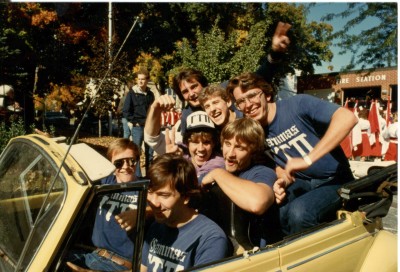
Many alumni aren’t as involved as they get a bit older, Miller said. Then, around their 20th reunion, they start to think about Cornell more seriously. As they reconnect with others, reunions become a more important part of their lives, and so Homecoming matters more to them. They return for the nostalgia, for the traditions, and to see how the campus has—and hasn’t—changed.
Homecoming changes with them, up to a point. The parade, once a focus of the weekend, is gone, although the college did have a Homecoming parade in 2003 to celebrate the Sesquicentennial. And for nearly 15 years the college has sponsored a Homecoming Convocation on Saturday morning. There the 50th reunion class is recognized, and the college bestows its Young Alumni, Leadership and Service, and Distinguished Achievement awards.
Miller was instrumental in starting the convocation, and she’s still proud of it. “It’s such an emotional experience to be back in King Chapel, seeing what other alumni are doing,” she said.
But some traditions don’t change. The fall date, for example, is a constant, partly because of how beautiful campus is during autumn. And the football game, the starting point for the weekend’s schedule, isn’t going anywhere.
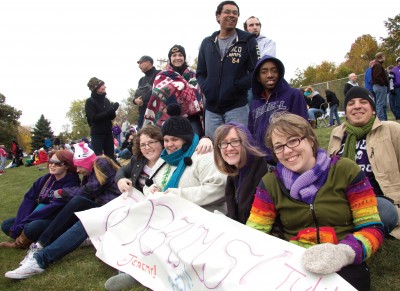
Unlike some other colleges, Cornell doesn’t have an alumni weekend in the summer. The college tried that, Miller said, but it didn’t work as well. So each fall, alumni ranging from a few months out of school to more than a half-century past graduation gather on the Hilltop.
“Homecoming is where Cornell reconnects,” she said.
Everyone knows that, and because they know that, they come back. They come from across the country and across graduating classes. They come by themselves, as couples, as families, or as large groups of friends. In the end, it doesn’t matter why they come back, or what they do once they’re here, because they’re coming back to Cornell. Back to the campus where they learned so much, made so many friends. Back home.

